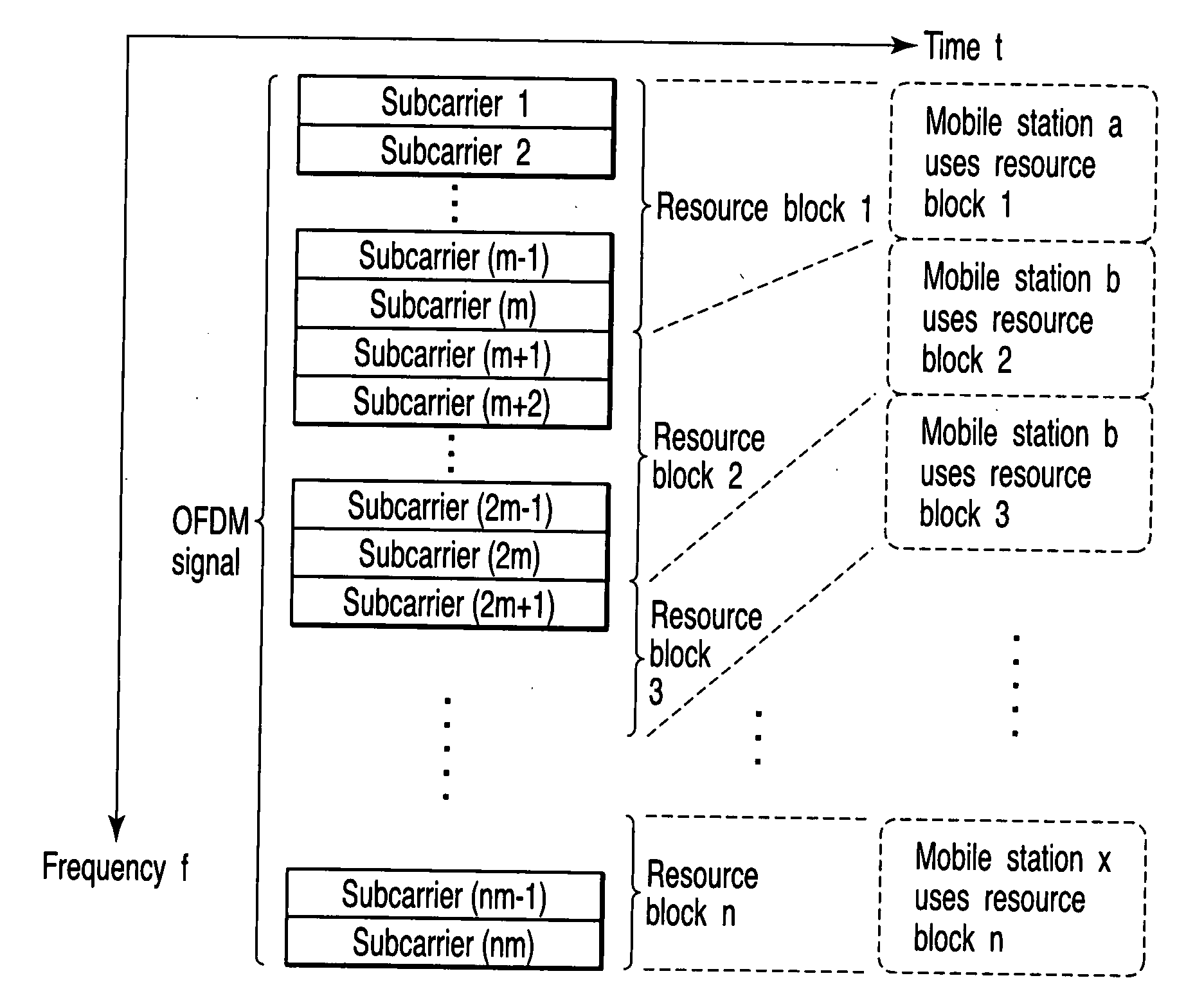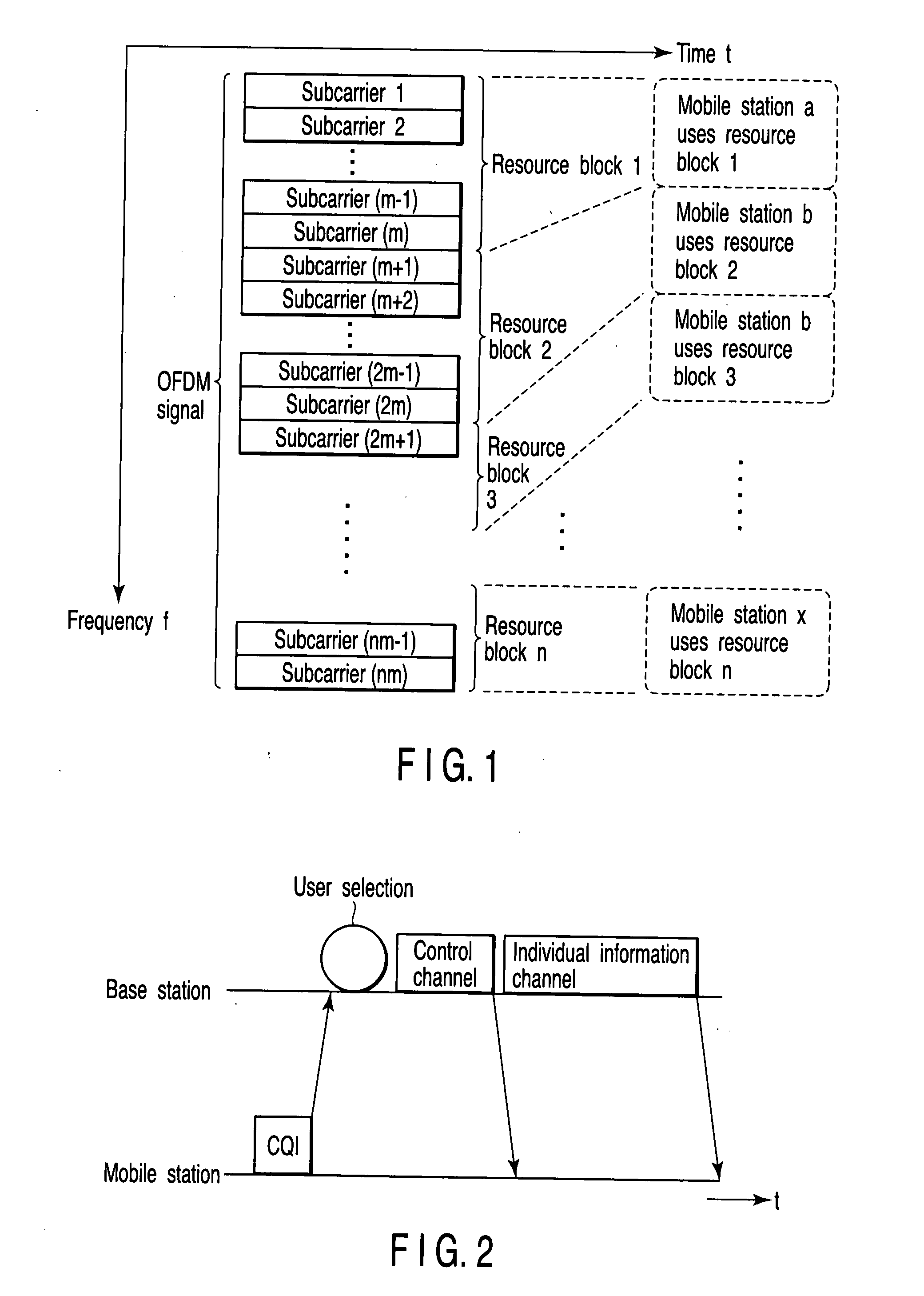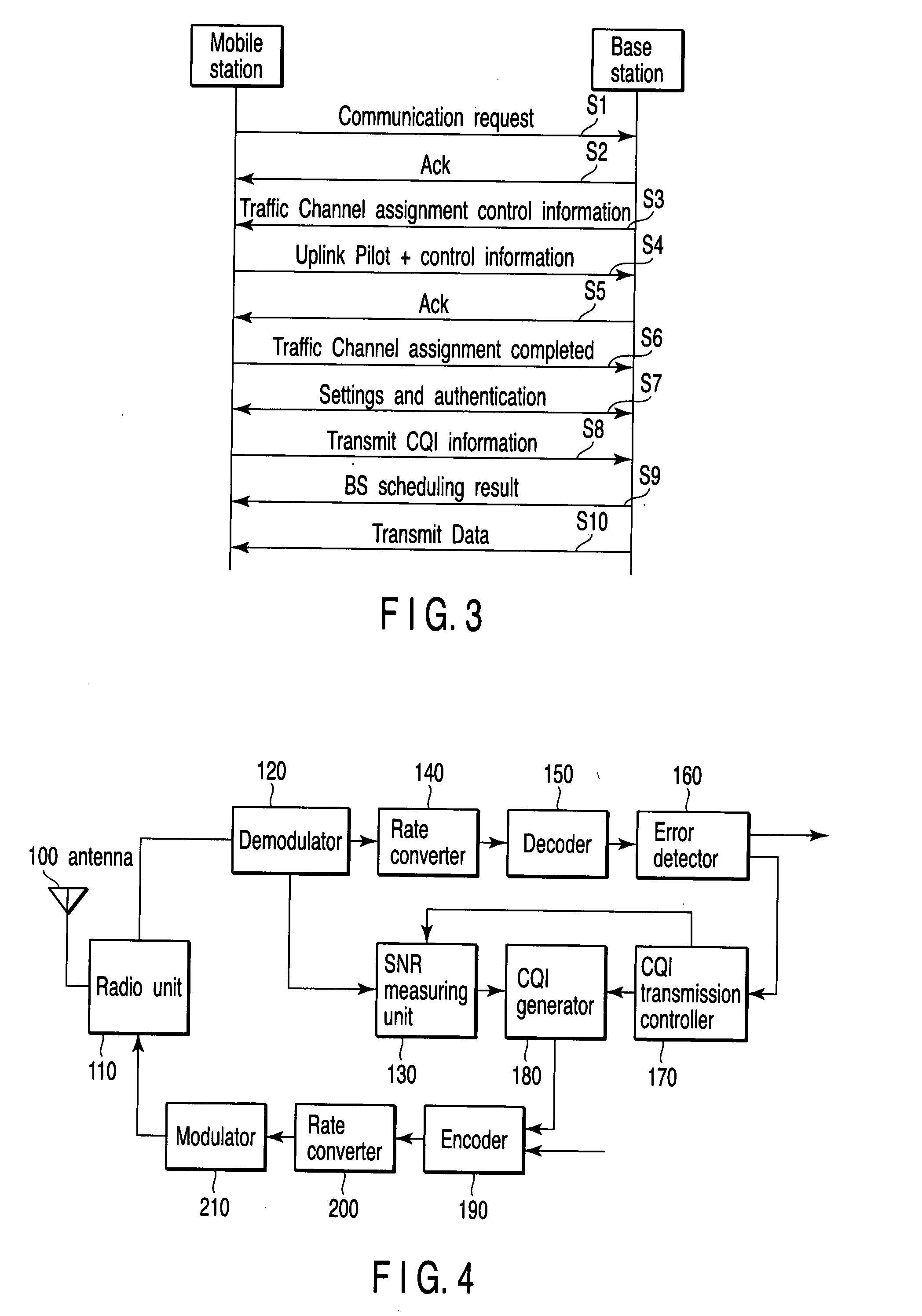Mobile radio terminal
a mobile radio terminal and terminal technology, applied in the field of radio communication system, can solve the problems of significant and achieve the effect of preventing deterioration of the upstream link throughput and reducing the amount of transmitted cqi information
- Summary
- Abstract
- Description
- Claims
- Application Information
AI Technical Summary
Benefits of technology
Problems solved by technology
Method used
Image
Examples
first embodiment
[0057]Next, operations of the mobile station are described. In this embodiment, the base station reduces the number of times of CQI transmission by setting a CQI transmission cycle for each of the mobile stations in accordance with QoS (Quality of Service) of each mobile station and, consequently, the signaling overhead of the CQI of the uplink is decreased. For this reason, the present embodiment is an embodiment in the time direction and can also be applied to a system using one resource block by the unit time, such as HSDPA and EV-DO.
[0058]The service used by the mobile station is roughly divided into two kinds, i.e. a best effort type service such as web browsing in which delay does not need to be considered, and a rate preservation type service such as VOIP (Voice over Internet Protocol), TV Phone, etc. in which delay is not permitted. In general, the rate preservation type service is operated at a lower rate than the best effort type service. Since delay is not permitted in t...
second embodiment
[0076]Next, operations of the mobile station are described. In this embodiment, the base station reduces the number of bits of CQI transmission by making the use range of the CQI table variable for each of the mobile stations in accordance with QoS (Quality of Service) of each mobile station and, consequently, the signaling overhead of the CQI of the uplink is decreased. For this reason, the present embodiment is an embodiment in the time direction and can also be applied to a system using one resource block by the unit time, such as HSDPA and EV-DO.
[0077]In general, the rate preservation type service in which delay is not permitted is operated at a lower rate than the best effort type service such as web browsing in which delay does not need to be considered, as described in the first embodiment. To give priority to the mobile station utilizing the rate preservation type service, the base station executes user selection by distinguishing the mobile station utilizing the best effor...
third embodiment
[0095]Next, an operation of the mobile station is described. In this embodiment, the base station detects the channel variations (phase rotation, CQI information, handoff conditions of the mobile station, and the speed information of the mobile station using the GPS (Global Positioning System)) of the uplink, regularly determines the CQI transmission cycle on the basis of the detection result, and notifies the mobile station of the determined CQI transmission cycle, during the communication with the mobile station. The mobile station transmits the CQI information to the base station, in the CQI transmission cycle of which the base station regularly notifies the mobile station. The total number of the CQI transmissions during the communication is thereby reduced and, consequently, the signaling overhead based on the CQI of the uplink is decreased. For this reason, the present embodiment is an embodiment in the time direction and can also be applied to a system using one resource blo...
PUM
 Login to View More
Login to View More Abstract
Description
Claims
Application Information
 Login to View More
Login to View More - R&D
- Intellectual Property
- Life Sciences
- Materials
- Tech Scout
- Unparalleled Data Quality
- Higher Quality Content
- 60% Fewer Hallucinations
Browse by: Latest US Patents, China's latest patents, Technical Efficacy Thesaurus, Application Domain, Technology Topic, Popular Technical Reports.
© 2025 PatSnap. All rights reserved.Legal|Privacy policy|Modern Slavery Act Transparency Statement|Sitemap|About US| Contact US: help@patsnap.com



